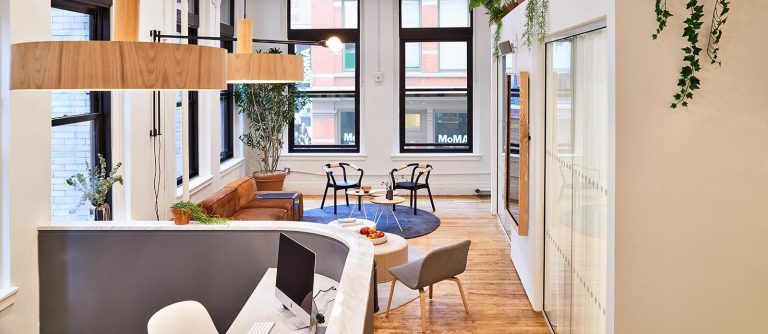Designing Functional Home Offices
- 4:35 am
- admin
By focusing on ergonomic design, productivity enhancement, and comfort, you can create a home office space that not only supports your work but also enhances your overall well-being.
Through this article, GTax will provide you with some basic information about Designing Functional Home Offices.
1. Ergonomic considerations
When building a functional home office, it’s important to prioritize ergonomic considerations. Ergonomics refers to the science of designing workspaces and equipment to maximize efficiency and comfort while reducing the risk of stress or injury.
Prioritizing ergonomics not only enhances your comfort, it also increases productivity and reduces the risk of developing musculoskeletal problems associated with long hours of desk work.
Here are some important ergonomic factors to keep in mind:
- Chair and Desk: Invest in an ergonomic chair with proper lumbar support and an adjustable desk that accommodates your height. This ensures that you maintain a healthy posture during long work hours.
- Monitor Placement: Position your computer monitor at eye level to reduce neck strain. You can use monitor stands or adjustable mounts to achieve the optimal height.
- Keyboard and Mouse: Choose an ergonomic keyboard and mouse that promotes a natural hand position. Consider a keyboard tray or a split keyboard design for added comfort.
- Lighting: Adequate lighting is essential to prevent eye strain. Natural light is ideal, but if that’s not possible, invest in adjustable, non-glare lighting fixtures.
- Cable: Keep cables organized and out of the way to prevent tripping hazards and maintain a clutter-free workspace.

2. Maximize productivity
An efficient home office is where you can complete tasks efficiently and stay focused.
Here are some strategies to maximize productivity:
- Organized workspace: Keep your workspace organized and clutter-free. Use storage solutions like drawers, shelves or cabinets to store office supplies and keep them easily accessible.
- Personalized layout: Arrange your desk and office equipment in a way that suits your work style. Some prefer minimalist setups, while others thrive with inspirational décor.
- Task management: Use tools like to-do lists, calendars, or project management software to track tasks and deadlines. Break tasks into smaller, more manageable chunks to stay productive.
- Manage distractions: Minimize distractions by setting boundaries with family members, using noise-cancelling headphones, and turning off unnecessary notifications.
- Take regular breaks: Schedule short breaks to stretch, move, and refresh your mind. Avoid sitting for long periods of time as it can lead to fatigue.
3. Create a comfortable atmosphere
A comfortable atmosphere in your home office can greatly improve your overall work experience.
Here’s how to create it:
- Temperature control: Maintain a comfortable room temperature by appropriate heating, cooling or ventilation. A comfortable seat cushion can also bring you comfort.
- Personalize: Decorate your home office with elements that inspire and motivate you. Personal touches like artwork, plants or family photos can make a space inviting.
- The right acoustics: Consider adding soft furnishings like rugs or curtains to muffle sound and reduce echoes, creating a quieter and more pleasant environment.
- Good air quality: Ensure adequate ventilation and fresh air circulation to create a healthier and more attractive workspace.
Breakout area: Designate a small relaxation area or a cozy reading nook in your home office to rest and recharge.
Conclude
By focusing on ergonomic design, productivity enhancement, and comfort, you can create a home office space that not only supports your work but also enhances your overall well-being.
When using GTax’s services, Consultants will help you consider the advantages and disadvantages of each option and advise you on the best solution for your needs.
How to establish a business in Vietnam?
Following are the steps for your reference:
- Decide on the scope of your business;
- Rent a business location;
- Choose company type;
- Decide on the company name and capital structure;
- Apply for Investment Registration Certificate (IRC);
- Apply for Enterprise Registration Certificate (ERC);
- Open a business bank account;
- Complete all post-incorporation requirements.
Compiled by GTax Accounting Service

Compare office rental prices in Ho Chi Minh City for foreign businesses starting a business
How can you understand the complexity of office rental costs? Can you find the best deal for your budget and needs? Do you know other office solutions that help you

Company registered address in Vietnam
A business requires a legal address in Vietnam in order to incorporate a company in the country. Most businesses require that it have its own physical location, such as an

Personal Income Tax: tax years & finalisations
Individuals in Vietnam are subject to Personal Income Tax (PIT) based on their tax residence status. Employment income is generally subject to various progressive tax rates, while other income
-
How To Make Investment In Vietnam
-
Designing Functional Home Offices
-
Setting up a home office: How much does it cost?
-
How to setup a new company in Vietnam
-
Compare office rental prices in Ho Chi Minh City for foreign businesses starting a business
-
Head office registration requirements for newly established companies in Vietnam
-
The difference between a Representative Office and a Foreign Invested Company
-
A step-by-step guide to starting a business in Vietnam
-
What type of business to choose in Vietnam?
-
Forms of business in Vietnam
